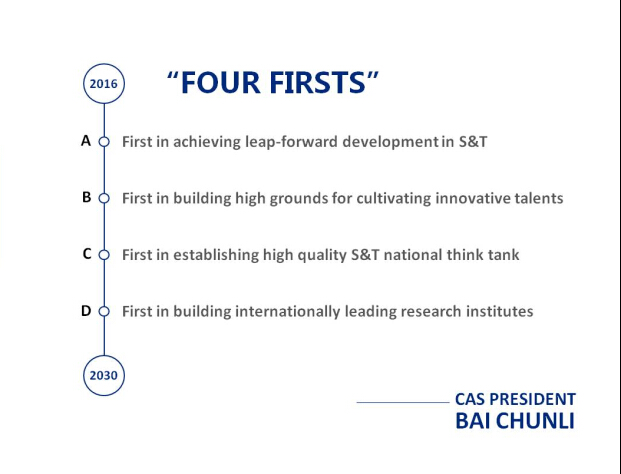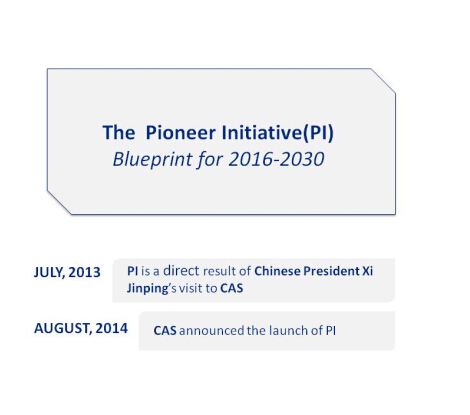

The harmonious work between Chinese Academy of Sciences (CAS)’s Pioneer Initiative (PI) and its 1-3-5 Strategy has brought reform and restructuring to CAS, placing it at the “start of a new era”, according to CAS President Bai Chunli in the February issue of Small, a multidisciplinary journal published by Wiley that covers topics at the nano- and micro-scale in the fields of materials science, chemistry, physics, engineering, medicine and biology.

The Pioneer Initiative was launched by CAS in August 2014 as a direct result of the visit by Chinese President Xi Jinping to CAS in July 2013. CAS’ 1-3-5 Strategy was launched in 2011 and has laid a good foundation for the implementation of PI. The two have a shared mission and have worked harmoniously to advance CAS’ position as a key player in China’s national research system.
The implementation of these efforts has brought restructuring to CAS research institutes, which are now classified into four basic categories, namely, centers for excellence, innovation academies, big science facilities and feature institutes.
CAS has also made efforts to improve management, administrative coherence, cross-disciplinary cooperation and the maximization of resources by restructuring four scientific management bureaus at its headquarters.

Besides these reforms related to domestic work, PI and the 1-3-5 Strategy have also encouraged international cooperation. CAS has implemented an academy-wide internationalization strategy and is implementing programs to support cooperative research, recruit or collaborate with international talents, exchange talents and students and jointly build research centers and facilities.
In the course of implementing the 1-3-5 Strategy, President Bai has urged all CAS employees to undertake constant review and evaluation, asking “What works well? And what could work better?” to “adjust our priorities and assure that CAS is oriented towards high-impact, high-value research.”
PI seeks to achieve leap-forward development in science and technology (S&T), build high grounds for cultivating innovative talents, establish high quality S&T national think-tank, and build internationally leading research institutes.
The goal of the CAS 1-3-5 Strategy is to develop a strategic position for each institute, and it also requires each institute to accomplish three major breakthroughs or successes in five years, either in basic or applied research, and nurture five major successes for the longer term over a course of 5-10 years.
The Wiley is the international scientific, technical, medical, and scholarly publishing business of John Wiley & Sons, with strengths in every major academic and professional field and partnerships with many of the world's leading societies.
Source: english.cas.cn